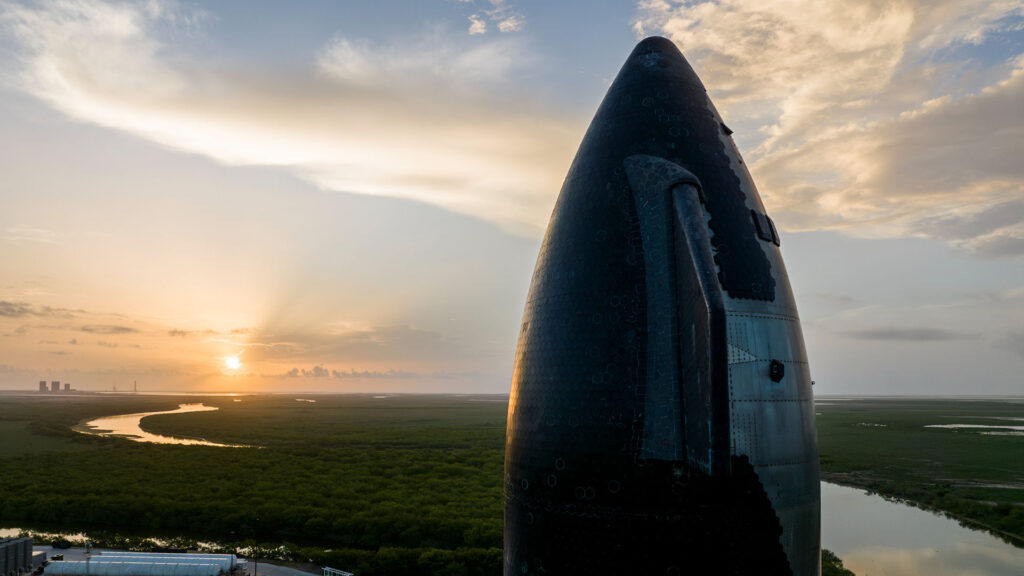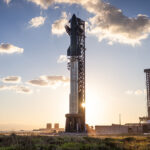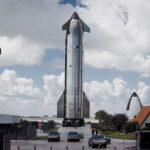Last week, SpaceX announced on X (Twitter) that Flight 5 Starship (Ship 30 + Super Heavy Booster 12) is ready to fly and the only hurdle is the final regulatory approval.
The US Federal Aviation Administration (FAA) issues a license for each Starship test flight days before the launch. This time, the regulatory approval (the license) is still pending.
Prior to SpaceX’s announcement of the Flight 5 Starship readiness, Elon Musk’s space company performed several mandatory tests and procedures that we will cover in this post. As soon as SpaceX gets the green light from the FAA, there are more tests expected to finalize the procedures before launch.
“Flight 5 Starship and Super Heavy are ready to fly, pending regulatory approval,” SpaceX wrote in an official post on X.

Flight 5 Preparations at Starbase
Starbase located at Boca Chica, Texas is SpaceX’s primary Starship testing, production, and launch site. This vast land near the Boca Chica village and beach is the center of attention as the world’s biggest spaceship (Starship) has already been test-launched from here 4 times.
Last month on Saturday 27th July, SpaceX performed a successful 6-engine static fire test on Flight 5 Starship. this was the 2nd static fire test on the vehicle. A lot has happened at Starbase between this static fire test and SpaceX’s statement of Flight 5 readiness.
One of the RVac (Raptor vacuum) engines on Ship 30 (Flight 5 upper/2nd stage) needed to be replaced after the static fire test. SpaceX rolled back Ship 30 to Mega Bay 2 for an engine swap.
Starships were meant to fly
Elon Musk via X.
Related: SpaceX fires the Raptor 3 engine for the first time.
Although another static fire test was expected after the new vacuum engine was installed SpaceX didn’t perform one. After the engine swap, SpaceX moved Ship 30 to the Massey outpost. Instead of the static fire, SpaceX only executed a spin prime test. In a spin prime test, the turbopumps of a rocket engine are spun up without igniting the pre-burners or the main combustion chamber.
Apparently, the spin prime test on Flight 5 Starship 30 was enough to confirm the integrity of the newly installed Raptor engine on the ship. After the spin prime test at Massey’s, SpaceX moved Ship 30 back to Megabay 2 to switch it from the test stand to the transport stand to move it to the Sanchez Lot where it’s been parked ever since (reported by NASASpaceFlight / video below).
SpaceX achieved its goal of landing both the 1st and 2nd stages of Starship into the ocean in the Flight 4 launch and landing test.
The goal of Starship’s 5th flight test (Flight 5) is to catch the massive 1st stage/Booster 12 rocket with the launch tower’s arms called the Chopsticks. Starship booster’s landing back to the launch tower requires a new license from the FAA.
Since this is an entirely new procedure that SpaceX is aiming for with the Flight 5 launch and landing test, the FAA approval process is getting delayed. The environmental and safety evaluation needs to be re-assessed to sail into this uncharted territory — catching the world’s biggest rocket on its landing.
It’s going to be a super-exciting event, stay tuned as we post further updates as Flight 5-related events happen.

Stay tuned for future updates on Starship and SpaceX, Follow us on:
Google News | X (Twitter) | Flipboard | WhatsApp Channel | RSS (Feedly).
Related SpaceX / Starship News
- SpaceX shares stunning videos of Flight 11 Starship and Booster 15 landings
- Starship Flight 11: Read live updates, watch live-stream recordings of the launch
- Starship Flight 11: Here’s how to watch the live-streams and get live updates
- SpaceX finalizes preps for Starship Flight 11 launch on 13th October (updates, video)
- SpaceX announces Starship Flight 11 date, launch preparations update from Starbase
- Flight 11 Ship 38 goes through a full duration static fire test, the last Block 2 Starship







